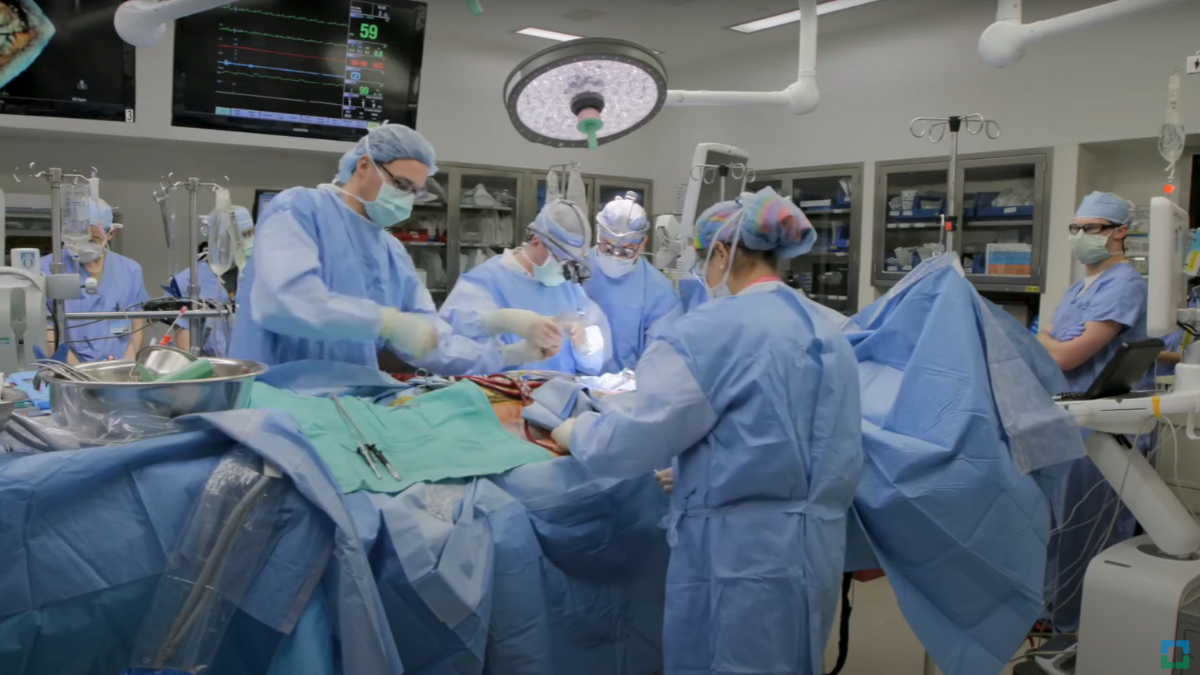
On July 10, the House overwhelmingly passed the bipartisan 21st Century Cures Act, which contains many provisions designed to accelerate the discovery, development, and delivery of precision medicines. The goal of precision medicine is to get the right medicine to the right patient at the right time. But, as the Senate considers companion legislation to the House effort, there’s still more to be done to ensure that we have the right regulatory and reimbursement tools to incentivize the development of cures for the most devastating diseases.
As a three-time cancer survivor, I’m excited by the progress we’ve made against the “emperor of all maladies.” I’m mindful, though, of how much further we have to go to conquer it. Cancer remains the second leading cause of death in the United States. Far better diagnostic and treatment options are needed for patients diagnosed with metastatic solid tumors of the lung, colon, pancreas, or ovaries. Diagnosing these diseases after they have metastasized—as we do all too often today—means the best we can do is delay the inevitable, at great human and financial cost.
I remain optimistic, because I’ve seen firsthand the inventiveness of America’s leading researchers and companies. I’m watching a flood of new information emerge that is helping researchers map out cancer’s vulnerabilities at the genomic level, and develop treatment strategies tailored to a patient’s unique tumor profile. These approaches are being made possible by advanced computing platforms that can rapidly sort through torrents of information, guiding doctors and patients to the best therapies.
Cutting-Edge 1960s Science
For instance, IBM’s Watson is analyzing millions of journal articles, patient records, and data on approved and experimental drugs to help develop personalized cancer-care regimens faster than any physician could ever do. Watson and other “big data” and machine-learning approaches are getting smarter every day—and will, one day, expand state-of-the-art oncology services to every cancer patient in America, not just those with access to leading cancer centers.
Unfortunately, the way the Food and Drug Administration approves most new medicines remains rooted in clinical signs and symptoms, not molecular pathways. The FDA’s approach is based on cutting edge science…circa 1962. In those days, we couldn’t identify the molecular mechanisms of disease, let alone design drugs to target them. It’s how we got the double-blind, placebo-controlled trial (preferably two of them) as the “gold standard” for approving new drugs.
As we gain confidence that we are actually targeting the pathways causing the disease or disorder in question, that gold standard is increasingly out of date. We can also design trials that, as they proceed, help unravel those pathways using targeted medicines. We need to embrace a learn-as-we-go strategy that doesn’t simply ask one narrow question at a time, in one trial at a time. The current drug development and approval system is too expensive, too time-consuming, and, frankly, unethical. There are better approaches.
Let’s Transform Medicine’s Clinical Trials
A one-size-fits-all approach to innovation causes too many drugs to fail that could have succeeded if they were tested in the correct order, on the correct groups of patients. Instead, we should ensure that all trials attempt to match new medicines to a patient’s biology. We know that different patients with the same clinical symptoms can respond differently because of a variety of genetic factors that affect drug metabolism (or indicate that one patient actually has a totally different disease that needs a different treatment).
While the FDA remains concerned about approving ineffective or dangerous drugs, alternative approval pathways—based on molecular signatures called biomarkers, followed over time in patient registries via electronic medical records—could bring potential treatments to desperate patients much sooner, with appropriate requirements for post-market trials verifying long-term safety and efficacy. That approach is the exception today. It should be the rule.
Despite repeated pronouncements since 2004, the FDA isn’t embracing clinical-trial transformation to the degree that it could. The rapidly falling cost of genetic testing, the ability to share hundreds of thousands of detailed patient medical records, and the rise of analytic infrastructure—“bioinformatics” that can rapidly comb through massive, complex datasets—all make it increasingly possible for physicians to develop personalized treatment profiles.
We Need a National Cures Strategy
To revolutionize outcomes for patients, Congress must require the FDA to collaborate with the broader scientific community to transform drug development by unleashing the full potential of molecular medicine and digital tools. Congress must also set overarching goals for all federal agencies that deal in digital medicine—especially the Department of Health and Human Services, the National Institutes of Health, and the National Science Foundation—to streamline bureaucracies, reduce waste, coordinate research efforts, and hold themselves accountable through annual or biannual performance reports.
Finally, FDA reform will also have to go hand-in-hand with reimbursement reforms that reward breakthrough innovations. Many curative technologies will be costly at first, but will save the health-care system vast amounts of money in the long run by reducing hospitalizations, use of nursing homes, and the need for repeat physician visits and tests. A one-shot cure for leukemia or sickle-cell anemia may be expensive by historical standards, but may still be cost-effective for public and private payers in the long run. New approaches to funding and paying for those breakthrough treatments will be needed if we are to address our massive entitlement-spending challenges for Medicare and Medicaid.
Embracing a national cures strategy will challenge not just regulators, but our entire system for accelerating and paying for new innovations. It will also enable a golden age of medicine, bringing hope to millions of patients who lack hope today.
This article is reprinted from City Journal.









